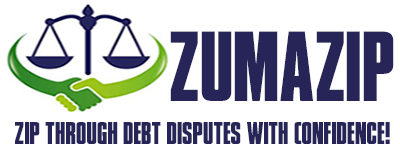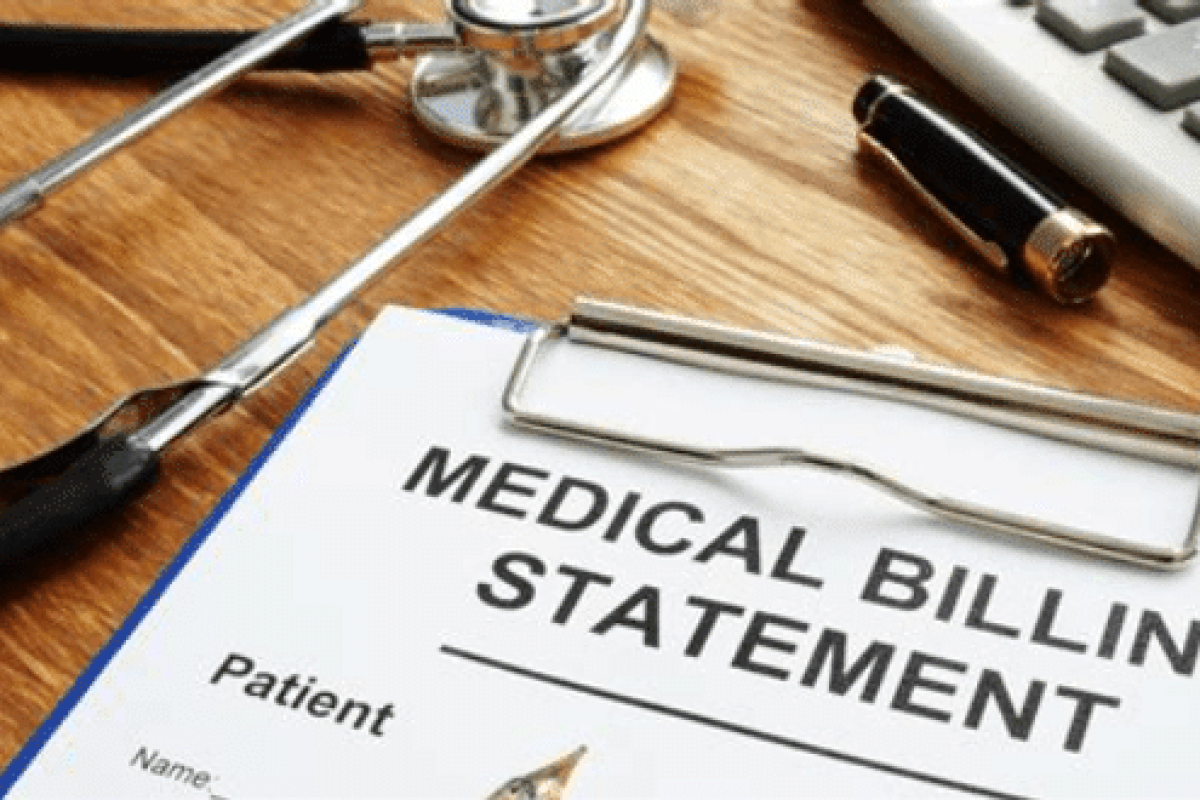If you are struggling to pay off your medical debt, you have options. From financial assistance programs to debt consolidation ZumaZip.com guide on medical debt and how to find relief.
Medical debt is a prevalent problem in the United States. Unlike many other countries that offer free, subsidized healthcare to citizens and residents, the United States relies on a system of mainly private health insurers. These companies have a slew of requirements that must be met when patients seek out healthcare.
Depending on the type of health care plan you have, there may be a certain deductible that must be paid before the plan will pay benefits.
You may also be required to visit in-network physicians or specialists when visiting a doctor unless you are willing to pay out-of-pocket expenses for visiting a healthcare provider whose practice isn’t covered by your insurer.
According to the most recent U.S. Census, nearly one in five U.S. households reported that they are unable to pay for their medical care upfront. Since medical care should be thought of as an essential service, especially in cases where the patient is injured or severely sick, this statistic is particularly scary.
The only option is to obtain the treatment and suffer the debt you incur or try to get better on your own, which can lead to severe complications and potentially even be fatal.
What should I do if I have medical debt?
If you’ve received treatment for a condition and incurred debt as a result, you may be wondering how to overcome it. Cases of hospitalization can be especially expensive and run into the thousands of dollars, especially if you have a lackluster insurance plan or no insurance at all.
Of the 19% of U.S. households that had medical debt, over half of the individuals surveyed indicated that they owed more than $2,000 to healthcare providers.
While this isn’t the place to debate universal health care or better insurance plans, there is a systemic problem that should be addressed. Although efforts have been made to improve the healthcare system with the introduction of the Affordable Care Act, millions of Americans are still suffering from large medical bills.
Fortunately, there are several ways that you may be able to obtain forgiveness for your medical debt.
Ask for financial assistance from your hospital
If you’ve obtained a huge bill from a hospital as the result of a stay you weren’t expecting or an injury, you may be able to obtain financial assistance. To do this, visit the healthcare provider’s website or contact the customer care number on your invoice.
Frequently, a financial assistance policy is in place for those individuals who meet certain income requirements. If you are uninsured at the time of your visit to the hospital but don’t meet the requirements for a low-income household, you may be entitled to obtain a self-pay discount.
Instead of ignoring the bill, explore all options available with your healthcare provider to try to negotiate a reduced amount. If you are unable to negotiate a reduced amount, they may allow you to enter into a monthly payment agreement that is compatible with your budget.
Seek out help from an NGO
Non-governmental organizations (NGOs) often help those who are uninsured or have low incomes pay for their medical debts. For those with chronic conditions who require regular medical care or those who have expensive medications that they must pay for to treat their illness, an NGO can be a true lifesaver.
While often these services don’t cover past medical expenses, they can help you with future ones. A few NGOs that help to cover the costs of medical care and pharmaceuticals include:
- HealthWell Foundation: If you’re battling a chronic disease that requires ongoing treatment, you may be able to find assistance with the HealthWell Foundation. It provides financial assistance for underinsured or uninsured individuals for expenses including prescription drugs, health insurance premiums, and deductibles. Frequently, funds provided are determined by the type of medical condition that you have.
- The PAN Foundation: This foundation also helps underinsured or uninsured individuals with chronic illnesses access inexpensive medications and treatments. For assistance, you’ll need to meet certain financial requirements and have a chronic condition. This NGO is a great option for those struggling to cover rising medication costs.
Use a debt consolidation loan
If your medical bill is significant, or you have other debts that you are struggling to pay off, it may make sense to take out a debt consolidation loan. Under a debt consolidation loan, you are given the funds to pay off all of your outstanding debts, and you’ll enter a new loan agreement with your lender.
Instead of paying multiple creditors, you’ll pay only a single amount to your lender each month. This consolidation can allow you to save a significant amount of money in interest and potentially pay your outstanding debt faster. To obtain a debt consolidation loan, you’ll need to have a decent credit score, generally above 650.
Go the debt settlement route
A number of debt settlement agencies offer to settle medical debts. In some cases, you may be able to settle your medical debt for less than 50% of its value. Debt settlement programs work by requiring you to make monthly payments towards settling your debts.
Once you have built up enough of these payments, the agency uses your funds to negotiate a settlement amount.
However, if you decide to enter a debt settlement program, your credit score may take a hit. You’ll also be required to pay the settlement agency for its services as your debts are settled, which may cost as much as 25% of the initial value of your debt.
Consider declaring bankruptcy
If your medical debt is simply too much to manage and you have no other option, bankruptcy may be an appropriate choice. Depending on your income, you may qualify for either Chapter 7 or Chapter 13 bankruptcy.
Under a Chapter 7 bankruptcy, most types of debt may be eliminated. Chapter 13 bankruptcy results in forgiveness of some debts, but you may be required to settle others. A qualified lawyer can help you explore bankruptcy to determine whether it is right for your situation.
Are you being sued for a medical debt?
If you’ve recently been sued for a medical debt, you will need to file an Answer with the court or else you’ll lose by default. When you lose by default, collectors can garnish your wages or put liens on your property in order to recoup the debt.
ZumaZip can help you respond to a debt lawsuit in 15 minutes.
The CFPB is working to remove medical bills from consumer credit reports
The Consumer Financial Protection Bureau (CFPB) is initiating a rulemaking process aimed at removing medical bills from American credit reports. This move is part of a broader effort to aid families in recovering financially from medical crises and to protect them from aggressive debt collection tactics.
The Fair Credit Reporting Act (FCRA) already limits how medical information can be used in credit decisions and its inclusion in credit reports. An exemption created in 2005, however, allows creditors to consider medical data as “financial information.
More specifically, the CFPB’s proposed changes aim to eliminate medical debt from credit reports, restrict creditors from using medical bills in underwriting, and prevent coercive collection practices, especially when related to medical debt.
Since research shows that medical debt doesn’t predict someone’s ability to repay future loans as reliably as other types of debt, like credit card or mortgage debt, these credit reporting changes may be long overdue.
Here’s how to get medical bills forgiven
First, check with your hospital’s administration to see if they offer a medical bill forgiveness program. Depending on your income, the number of people in your household, and how old your bill is, you may qualify for forgiveness.
As a reminder, the CFPB and Medical Debt Relief Act have proposed new regulations on credit reporting, aiming to remove all medical debt from credit reports, thus making the credit playing field more even for people who have faced health challenges.
Seek low-income medical debt forgiveness
Under Section 501(r)(4) of the Internal Revenue Code (IRC), tax-exempt hospital organizations are required to establish a written financial assistance policy (FAP). This policy must include free or discounted health services for individuals who meet the organization’s financial assistance criteria and are unable to pay for some or all services.
The FAP should apply to all emergency and medically necessary care provided by the hospital. It must be widely publicized, detailing eligibility criteria, the basis for calculating charges, and the method for applying for assistance.
Each hospital must adhere to the following points in regarding to FAPs:
- Widely Publicizing the FAP: Hospitals must make the FAP, application form, and a plain language summary available on their website, in paper format upon request, and in public areas of the hospital. They are also required to inform the community about the FAP, particularly those likely to require financial assistance.
- Assistance for Limited English Proficiency Populations: Hospitals must translate FAP documents into primary languages spoken by significant populations with limited English proficiency in the community.
- Regulatory Background: The requirements stem from the Patient Protection and Affordable Care Act (PPACA), which added extra obligations for tax-exempt hospitals under Section 501(r). The final regulations, effective from December 29, 2015, provide detailed guidance on these requirements.
- Provider List in FAP: The FAP must include a list of providers delivering emergency or other medically necessary care in the hospital and specify which providers are covered by the FAP.
- Implementation and Compliance: Hospitals must consistently carry out the policy and are subject to examination for compliance. The policies must be adopted by an authorized body of the hospital and translated as necessary for diverse communities.
In short, FAPs makes low-income medical debt forgiveness more accessible.
Let’s take a look at an example of a real FAP from a chain of hospitals in Texas known as Ascension Seton (note that each hospital’s FAP varies, but the following is a standard example that reflects typical FAPs within the US).
Example of low-income medical debt forgiveness program as outlined in a hospital financial assistance policy
Ascension Seton’s Financial Assistance Policy provides various levels of financial aid for medical services, based on the patient’s income level and other criteria:
- 100% Charity Care for Low-Income Patients: Patients with an income at or below 250% of the Federal Poverty Level (FPL) may be eligible for complete charity care. This applies to charges remaining after any insurance payments, if applicable. Eligibility can be established through a financial assistance application or presumptive scoring. The deadline for application submission is 240 days after the patient’s first discharge bill.
- Sliding Scale Discounts for Moderate-Income Patients: Patients with incomes between 251% and 400% of the FPL are eligible for discounted care on a sliding scale. The discounts range from 85% to 95%, depending on the exact income level. The same 240-day application deadline applies.
- Means Test for High-Income Patients: Patients earning more than 400% of the FPL might qualify for discounts based on their total medical debt compared to household gross income. This is determined through a “Means Test.” The level of assistance is similar to that for patients at 400% of the FPL.
- Asset Test: Eligibility for financial assistance may be denied if a patient has substantial assets. This “Asset Test” assesses a patient’s ability to pay based on their assets, which, if exceed 250% of the FPL amount, may disqualify them from aid.
- Presumptive Scoring: This method can be used to determine eligibility for 100% charity care without a complete application, based on a patient’s unpaid balance within 240 days after discharge.
- Limitations for Certain Insurance Plan Participants: Assistance might be reduced or denied for patients in specific insurance plans where Ascension Seton is considered “out-of-network”.
- Nominal Flat Fee: Eligible patients might be charged a nominal fee up to $30 for services, not exceeding the Average Gross Billing (AGB) charge.
- Appeal Process: Patients can appeal a denial of financial assistance within 14 days of notification, with the final decision provided in writing.
Other types of non-need-based assistance are also available, such as discounts for uninsured patients and prompt pay discounts.
To apply for assistance, patients can use the presumptive scoring method or submit a financial assistance application, available in multiple languages. The policy also includes guidelines for billing and collections practices.
This summary provides an overview of Ascension Seton’s Financial Assistance Policy, designed to aid patients in different income brackets with their medical bills.
Access these medical debt forgiveness programs in 2024
As of 2024, there are several medical debt forgiveness and relief programs available in the USA, as well as new legislative efforts and policies aimed at easing the burden of medical debt. Let’s take a look at some of these programs.
Local Government Initiatives
Various local governments have started initiatives to tackle medical debt. For example, Cook County is using funds to retire $1 billion worth of hospital bills for residents. Other cities like Akron, Cleveland, Toledo, New Orleans, Wayne County, Washington, D.C., and New York City have also implemented similar programs. These programs often work with organizations like RIP Medical Debt to buy and forgive debt portfolios from healthcare providers.
State protections and programs
Many states have implemented their own measures to protect residents from aggressive medical debt collection practices and to provide financial assistance. For example, some states have laws that exceed federal requirements for financial assistance from hospitals, both nonprofit and for-profit.
Federal Legislation and Policies
The Medical Debt Forgiveness Act, proposed in 2021, aims to provide more time for individuals to pay their medical debts and to remove some paid medical debts from credit reports. This act, if passed, will offer significant relief to individuals struggling with medical debt.
New York City program
In a notable example, New York City has launched a program to eliminate medical debt for 500,000 residents, in partnership with RIP Medical Debt. This program aims to relieve around $2 billion in medical debt, focusing on low-income, uninsured, or underinsured individuals.
Financial assistance and negotiation options
There are various options to manage and potentially reduce medical debt, including financial assistance programs, charity care at nonprofit hospitals, patient assistance programs for medical care and prescriptions, negotiating medical bills, and as a last resort, debt consolidation or bankruptcy.
Current legal protections and new legislation
The No Surprises Act, implemented in 2022, requires healthcare providers to give good faith estimates of healthcare costs upfront, which can help prevent unexpected medical bills. Additionally, as of 2023, medical debts less than $500 no longer appear on credit reports, and there is a $35-a-month cap on insulin for Medicare enrollees with Part D plans.
These programs and legislative efforts represent a growing recognition of the burden of medical debt and the need for more effective solutions and protections for individuals facing such challenges.
Are debt collectors coming after you for a medical bill? Respond with ZumaZip.com
What is ZumaZip?
ZumaZip is a convenient solution designed to streamline your response to a debt collection lawsuit. Here’s a breakdown of what you can expect when you use ZumaZip:
Firstly, you’ll access our user-friendly web application, which guides you through the process step by step. You’ll be prompted to answer a series of questions related to your specific situation. Once you’ve completed the questionnaire, you have the option to either print out the finalized forms and mail them to the appropriate courts yourself, or you can opt to utilize ZumaZip’s services to file them on your behalf. Additionally, if you choose this option, an attorney will review your document for added peace of mind.
If you’re seeking guidance on how to effectively respond to a debt collection lawsuit, ZumaZip can provide the assistance you need. Feel free to explore our FAQs for more information on what ZumaZip has to offer.
What if I haven’t been sued yet?
If you’ve only received a collections notice, but not a lawsuit, the best way to respond is with a Debt Validation Letter. When a debt collector contacts you in any way, whether it’s by phone or mail, you can respond by formally requesting a debt validation with a Debt Validation Letter . This letter notifies the collector that you dispute the debt and forces them to provide proof you owe the debt. They can’t call you or continue collecting until they provide validation of the debt. This flowchart shows how you can use a Debt Validation Letter to win.
Get started with a Debt Validation Letter here.
How to Answer a Summons for debt collection in all 50 states
Here’s a list of guides on how to respond to a debt collection lawsuit in each state:
- Alabama
- Alaska
- Arizona
- Arkansas
- California
- Colorado
- Connecticut
- Delaware
- Florida
- Georgia
- Hawaii
- Idaho
- Illinois
- Indiana
- Iowa
- Kansas
- Kentucky
- Louisiana
- Maine
- Maryland
- Massachusetts
- Michigan
- Minnesota
- Mississippi
- Missouri
- Montana
- Nebraska
- Nevada
- New Hampshire
- New Jersey
- New Mexico
- New York
- North Carolina
- North Dakota
- Ohio
- Oklahoma
- Oregon
- Pennsylvania
- Rhode Island
- South Carolina
- South Dakota
- Tennessee
- Texas
- Utah
- Vermont; Vermont (Small Claims court)
- Virginia
- Washington
- West Virginia
- Wisconsin
- Wyoming
Guides on how to beat every debt collector
Hey there! Facing off against a debt collector can feel like a daunting challenge, but fear not! We’re here to help you navigate through it all with our handy guides designed to assist you in beating every debt collector you encounter. Whether you’re facing a new lawsuit or dealing with a persistent collector, we’ve got your back. Stay positive, stay informed, and let’s tackle this together!
- Absolute Resolutions Investments LLC
- Accredited Collection Services
- Alliance One
- Amcol Clmbia
- American Recovery Service
- Asset Acceptance LLC
- Asset Recovery Solutions
- Associated Credit Services
- Autovest LLC
- Cach LLC
- Cavalry SPV I LLC
- Cerastes LLC
- Colinfobur
- Covington Credit
- Crown Asset Management
- CTC Debt Collector
- Cypress Financial Recoveries
- Delanor Kemper & Associates
- Eagle Loan of Ohio
- Educap
- Estate Information Services
- FIA Card Services
- Forster & Garbus
- Freshview Solutions
- Fulton Friedman & Gullace LLP
- Harvest Credit Management
- Howard Lee Schiff
- Hudson & Keyse LLC
- Integras Capital Recovery LLC
- Javitch Block
- Jefferson Capital Systems LLC
- LVNV Funding
- Mannbracken
- Mariner Finance
- Medicredit
- Michael J Adams PC
- Michael J Scott
- Midland Funding LLC
- Mullooly, Jeffrey, Rooney & Flynn
- Mountain Land Collections
- MRS Associates
- National Collegiate Trust
- Nationstar Foreclosure
- Northstar Capital Acquisition
- NCEP LLC
- NRC Collection Agency
- OneMain Financial
- Palisades Collection LLC
- Pallida LLC
- Paragon Revenue Group
- Pinnacle Collections Agency
- PMAB LLC
- Portfolio Recovery Associates
- Provest Law
- PYOD LLC
- Reunion Student Loan Finance Corporation
- Revenue Group
- Regents and Associates
- RSIEH
- Salander Enterprises LLC
- Second Round Sub LLC
- Security Credit Services
- Sherman Financial Group
- Suttell and Hammer
- T-Mobile
- Transworld Systems
- Tulsa Teachers Credit Union
- UCB Collection
- Velo Law Office
- Velocity Investments
- Waypoint Resource Group
- Weinberg and Associates
- Wolpoff & Abramson
Settle your medical debt
Having a health challenge is stressful, but dealing medical debt on top of it is overwhelming. Here are some resources on how to manage medical debt.
- Am I Responsible for My Spouse’s Medical Debt?
- Do I Need a Lawyer for Medical Bills?
- Do I Need a Lawyer to Fight Medical Bill Debt?
- Does Bankruptcy Clear Medical Debt?
- How Much Do Collection Agencies Pay for Medical Debt?
- How to Find Medical Debt Forgiveness Programs
- Is There a Statute of Limitations on Medical Bills?
- Medical Debt Statute of Limitations by State
- Summoned to Court for Medical Bills — What Do I Do?
- Summoned to Court for Medical Bills? What to Do Next
Stop calls from Debt Collectors
Do you keep getting calls from an unknown number, only to realize that it’s a debt collector on the other line? If you’ve been called by any of the following numbers, chances are you have collectors coming after you, and we’ll tell you how to stop them.










 Camp Lejeune Lawsuit & Settlement Payments: Cash Advance Get Paid Fast!
Camp Lejeune Lawsuit & Settlement Payments: Cash Advance Get Paid Fast!  Contaminated Water UPDATE
Contaminated Water UPDATE


















